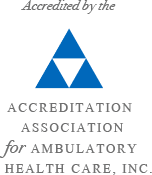What is Barrett’s Esophagus and How is it Treated?
 The esophagus is a muscular tube that connects the throat to the stomach. Some refer to it as a food pipe. Sometimes, acid from the stomach refluxes, or moves up into, this tube. Chronic reflux of stomach acid is referred to as gastroesophageal reflux disease (GERD). With repeated exposure to stomach acid, the cells that line the esophagus change. This change in cellular construct is Barrett’s esophagus. Fortunately, this condition does not occur with every case of GERD. However, if signs of Barrett’s esophagus occur, it is important to receive an accurate diagnosis and early treatment. Doing so can reduce the risk of esophageal cancer.
The esophagus is a muscular tube that connects the throat to the stomach. Some refer to it as a food pipe. Sometimes, acid from the stomach refluxes, or moves up into, this tube. Chronic reflux of stomach acid is referred to as gastroesophageal reflux disease (GERD). With repeated exposure to stomach acid, the cells that line the esophagus change. This change in cellular construct is Barrett’s esophagus. Fortunately, this condition does not occur with every case of GERD. However, if signs of Barrett’s esophagus occur, it is important to receive an accurate diagnosis and early treatment. Doing so can reduce the risk of esophageal cancer.
How Barrett’s Esophagus is Diagnosed
Barrett’s esophagus is diagnosed through an upper endoscopy, a screening that observes the appearance of cells in the lower esophagus. A doctor may also choose to perform a biopsy at the same time. A biopsy can help determine the extent of cellular change that has occurred. These changes, referred to as dysplasia, are a guide for treatment planning. Before testing, the doctor will perform a thorough consultation, medical history, and review of symptoms.
Common symptoms of Barrett’s esophagus include:
- Frequent heartburn
- Upper abdominal pain
- Chest pain
- Dry cough
- Difficulty swallowing
Treatment Options for Barrett’s Esophagus
Treatment for Barrett’s esophagus may vary from lifestyle remedies to comprehensive medical care depending on the extent of dysplasia that has happened. The goal of lifestyle changes is to reduce or correct gastroesophageal reflux. If cellular composition is not drastically compromised, treatment may take more of a “watch and wait” approach alongside recommended lifestyle modifications such as:
- Remaining upright for at least three hours after meals.
- Sleeping with the head elevated.
- Avoiding foods that cause acid reflux.
- Losing weight.
- Avoiding tobacco and alcohol.
Medical treatments for Barrett’s esophagus range from medications to surgery. Medications may be appropriate for very mild cases of dysplasia. The goal is to regulate, reduce, or block stomach acid production. More severe cases of dysplasia require treatment that removes abnormal cells. This can be done a number of different ways. We frequently perform HALO radiofrequency ablation to address Barrett’s esophagus due to its minimally-invasive nature and efficacy.
Gastroesophageal reflux disease can cause serious complications, including Barrett’s esophagus, if not treated. We can help you address both. Contact Gramercy Park Digestive Disease Center today to schedule a visit to one of our NYC locations.


